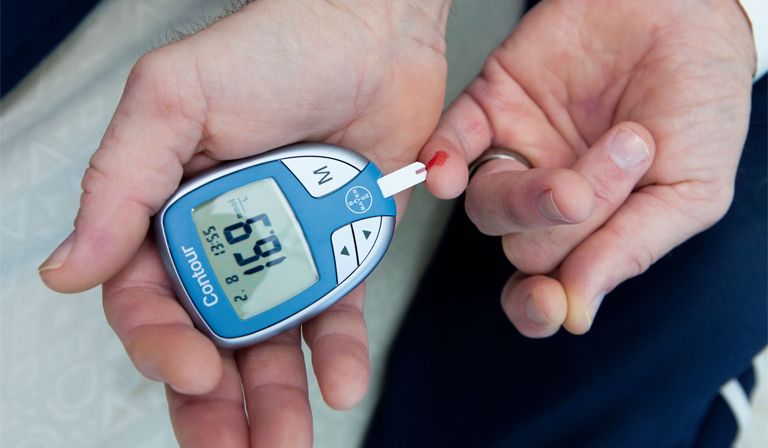Unveiling Synex Medical’s Groundbreaking Device
Synex Medical, a Toronto-based biotech research firm supported by Sam Altman, CEO of OpenAI, has propelled the healthcare landscape into a new era with its recent innovation—a novel device that harnesses low-field magnets and low-frequency radio waves to offer non-invasive blood glucose monitoring.
This remarkable advancement promises a paradigm shift in how individuals manage their glucose levels, sidestepping the discomfort and inconvenience associated with traditional finger prick methods.
The Essence of Magnetic Resonance Spectroscopy (MRS) in Blood Glucose Monitoring
Central to Synex’s breakthrough is the Magnetic Resonance Spectroscopy (MRS) technology, analogous to the principles employed in Magnetic Resonance Imaging (MRI). Jamie Near, an esteemed Associate Professor specializing in MRS research at the University of Toronto, explicates its functioning: “MRS, akin to MRI, employs magnetic fields to detect specific chemicals, such as glucose, by measuring their frequency in parts per million.” Please fill out the form if you or a friend would like more information on glucose monitoring devices.
The Triumph Over Technological Challenges
Matthew Rosen, a distinguished physicist at Harvard with a profound understanding of MRI and bioimaging, lauds Synex’s device as a testament to innovation.
By achieving accurate readings through low magnetic fields, Synex has surpassed the constraints posed by high-field resonance technologies—often costly and inaccessible to many.
Must Read CGMs in noncritical care hospitals optimizes glycemic control
The Expert Commendation
Professor Andre Simpson, a revered researcher and center director at the University of Toronto, joins the chorus of praise for Synex’s achievement.
He commends the device’s ability to encapsulate MRS technology into a compact box, mirroring the capabilities of larger-scale Magnetic Resonance Spectroscopy machines but tailored for localized spectroscopy, a remarkable engineering feat.
Embracing Competition and Advancements
While commercially available non-invasive blood glucose monitors remain elusive, the landscape witnesses the emergence of other contenders in the no-prick diagnostics space. Ventures like Know Labs and DiaMonTech are exploring alternative technologies, leveraging radio waves and mid-infrared lasers, respectively.
Moreover, reports circulate about tech giant Apple’s exploration of similar sensor technology for its wearables, though unconfirmed.
Read Guide about Wegovy Dosage Guide: The Best Way For Weight Loss
From Prototype to Wearable: Synex’s Vision for the Future
Synex envisions a seamless transition of its technology into a wearable device, a move with transformative implications for healthcare accessibility. Mohana Ray, a scientific director at Synex, expresses this ambitious aspiration. However, the miniaturization process remains a pivotal step before commercialization, ensuring user-friendliness and practicality.
Navigating Challenges and Pioneering New Frontiers
Rosen remains cautiously optimistic about the potential integration of such sensor technology into smartwatches or wearables, highlighting the critical role of healthcare professionals in assessing its clinical utility. He foresees a possible paradigm shift, where these non-invasive tools complement traditional blood-based diagnostics, revolutionizing blood glucose monitoring in the future.
Competitive Landscapes and Regulatory Challenges
However, while the industry anticipates a breakthrough, challenges loom on the horizon. Companies investing in non-invasive blood glucose monitoring technologies face rigorous regulatory standards and clinical validation processes before their devices can reach the market. Accuracy, consistency, and safety stand as paramount concerns in gaining regulatory approval.
Also, read about Lifestyle With Diabetes Prevention Strategies
Future Prospects and Societal Implications
Beyond the realm of blood glucose monitoring, the successful development of non-invasive techniques could pave the way for enhanced patient compliance, particularly among individuals averse to frequent blood tests. It could foster a new era of proactive healthcare, where continuous glucose monitoring becomes more accessible, reducing the burden on individuals managing chronic conditions.
Conclusion: The Evolution of Blood Glucose Monitoring
Synex’s strides in non-invasive blood glucose monitoring mark a significant milestone in healthcare innovation. While challenges persist, the promise of painless and convenient blood glucose monitoring opens doors to a future where individuals have greater control over their health. As technology continues to evolve, the convergence of innovation and healthcare promises a future of improved diagnostics and better patient outcomes.


